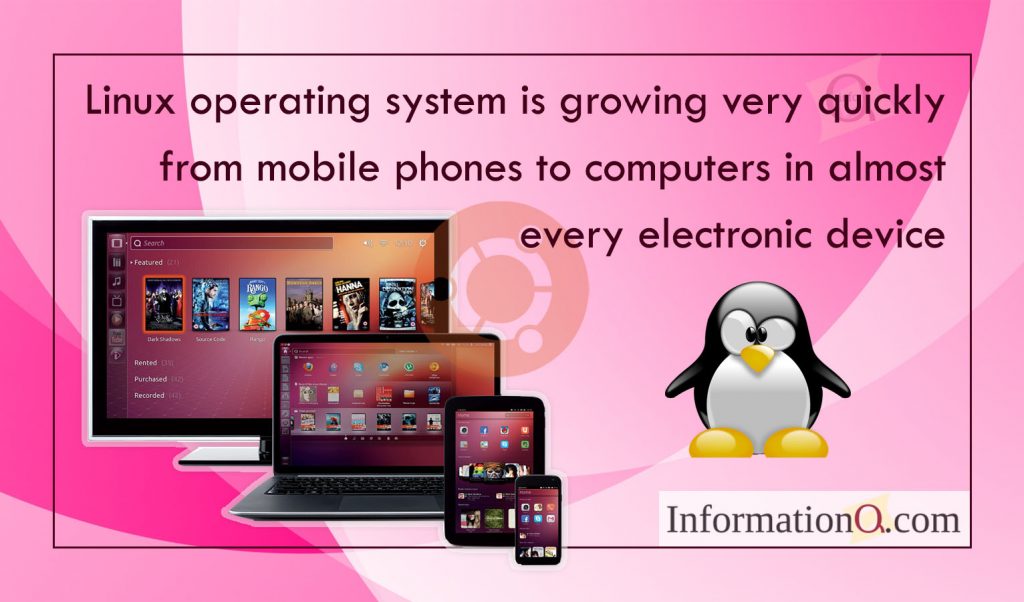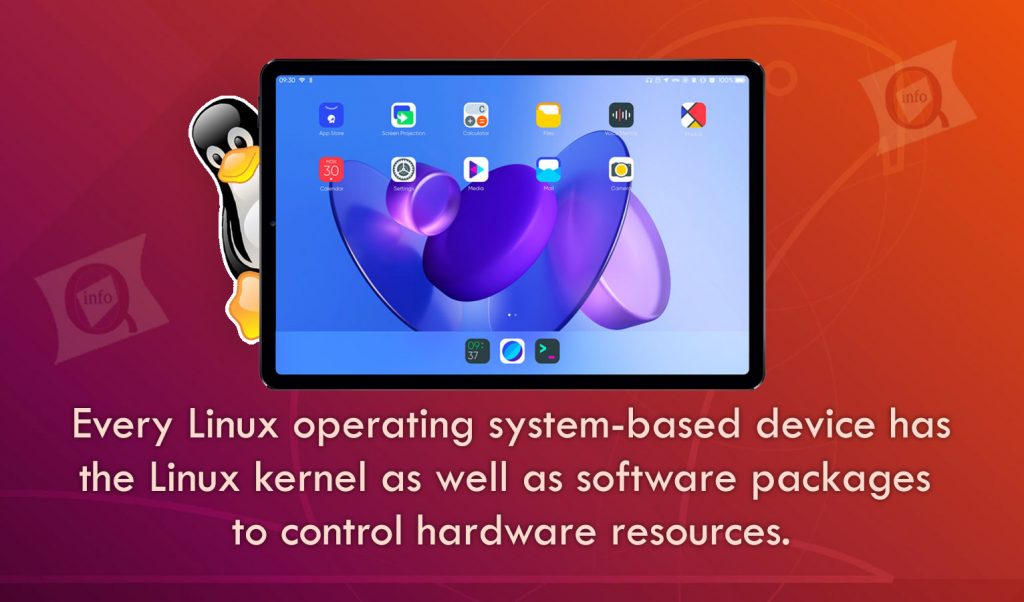Linux is a free, open-source OS and the source code of this operating system can be changed & distributed to anybody non-commercially & commercially under the General Public License (GNU). Initially, Linux OS was launched for PCs & it was progressively used within different kinds of machines like supercomputers, mainframe computers, servers, etc. At present, Linux OS is also utilized within embedded systems which include TVs, routers, digital video recorders, smartwatches, automation controls, video game consoles, etc. Android OS is the biggest success for Linux because it uses the Linux kernel that supports different tablets, smartphones.
What is Linux?
Linux is one kind of OS similar to iOS, Mac OS Windows, etc. One of the most popular Android OS is powered through the Linux OS. An operating system can be defined as, software that handles all the resources of hardware that is associated with a laptop or desktop. Simply we can say that it is an interface between the software and hardware. So it is essential to work the software properly. The components of the Linux operating system include the following.
The popular version of UNIX OS is Linux. It is open source because its source code is freely accessible so is free of charge to download & use. Linux operating system is quite related to that of the UNIX operating system.
Linux History/Evolution
The development of a Linux operating system can be done by a computer science student namely Linus Torvalds in the year 1991. He developed an idea to enhance the UNIX operating system.
He recommended some improvements while developing but was rejected by the designers of UNIX. So, Linus Torvalds thought of developing an operating system and its design can be done in such a way that it could be changed by its users. These days, Linux operating system is growing very quickly from mobile phones to computers in almost every electronic device.
Why Linux is used?
As compared to other operating systems, Linux operating system is different because of the following reasons. The Advantages of Linux OS include the following.
- Linux is an open-source operating system so customization can be possible for the programmers.
- Linux provides various programs options with different features so that you can select based on your requirement.
- It is extremely robust & secured so an anti-virus is not required regularly to scan it. Linux OS used companies are Google, Facebook & Amazon to guard their servers because it is extremely stable & reliable.
- Linux is available free of cost, so one can install it on several computers based on your requirement.
- This operating system is trouble-free & there is no issue with malware, viruses, & reducing computer performance.
- In Linux, software updates are very frequent
- Different distributions are obtainable so that one can use them based on the requirement
- Community support is high
- User privacy can be maintained
- Linux performance is high as compare to other OS. So at a time number of people can easily work.
- It is compatible with different file formats
- It executes all the tasks properly even space is less in the hard disk.
Linux Architecture
The architecture and components used in Linux OS include the following.
Hardware Layer
This layer consists of different peripherals namely RAM, CPU, HDD, etc.
Kernel
The kernel is the core of the system and the main function of this is to manage the memory, CPU & different peripheral devices. In the operating system, it is the lowest level.
Shell
An interface of the kernel is called a shell that hides the functions of the kernel from users. This kind of layer utilizes different commands to execute the kernel functions from the user.
Utilities
Utilities are programs that provide the user most of the functionalities of the operating system.
Bootloader
The bootloader is software that controls the boot procedure of your computer. If a computer is used with Linux OS, then a special boot loader should be used. In Linux OS, the two common boot loaders are Linux LOader (LILO) & LOAD Linux (LOADLIN).
Init System
Init system is a sub-system that bootstraps the consumer space & is charged through controlling daemons. Once the early booting is offered over from the bootloader.
Daemons
Daemons are background services that either start-up throughout boot otherwise after you log into the computer.
Graphical Server
The graphic server is the sub-system that shows the graphics on your desktop. Generally, it is called the X server otherwise simply X.
Desktop Environment
The desktop environment is the element that users interact with. There are several desktop environments to select from Cinnamon, GNOME, Mate, Enlightenment, Pantheon, Xfce, KDE, etc. Every desktop environment comprises fixed applications like configuration tools, file managers, games & web browsers.
Features
The features of the Linux operating system include the following.
- Portable
- Open Source
- Multi-User capacity
- Multiprogramming
- Hierarchical File System
- Shell
- Security
- Multitasking.
- Live CD/USB
- Graphical User Interface
- Application support
- File System
- Open Source
How does Linux Work?
Linux operating system supports different hardware devices. Every Linux operating system-based device has the Linux kernel as well as software packages to control hardware resources. And also, this OS comprises some GNU tools to control the resources of the kernel, for software, installation, security setting & performance configuration, etc. So that functional OS can be formed by using all these tools.
How to use it?
We can use Linux OS through two interfaces like the command line as well as an interactive user. Different distributions have a slightly different user interface but almost all the commands will have the same behavior for all the distributions. To run Linux from the terminal, press the “CTRL+ALT+T” keys. And, to explore its functionality, press the application button given on the left-down corner of your desktop.
Disadvantages
The disadvantages of Linux OS include the following.
- Not easy to learn like Mac or Windows
- Market share is limited
- No typical version
- Need technical support
- Need of proprietary software
- Hardware is Unsupported
- Troubleshoot is difficult
- Need package manager or unified installer
- It doesn’t support games
Thus, this is all about an overview of the Linux operating system. This OS is mostly free, open-source mostly, stable, and has possibilities of wide configuration. As compared to UNIX, Linux OS uses a superior algorithm than UNIX because it uses Multi feedback queue. The distribution of the Linux core system mainly depends on Debian.



Leave a Reply